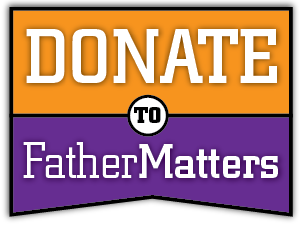Collaborative Divorce: Teamwork for Best Outcomes
By Pamela Donison, Esq., Integrative Attorney
I have a simple mission: to change the world one divorce at a time. And I am proposing to do so by inspiring people (including attorneys) to consider “alternative” dispute resolution as “primary” dispute resolution, particularly in family law. The most recent entry into the Alternative Dispute Resolution (ADR) field of study is Collaborative Law. Here I answer the basic questions about Collaborative Law, along with a few queries you may not have considered.
Who is Stu Webb?
Stu Webb is the “Godfather” of Collaborative Law. He is the person credited with creating this model of practice, which eschews litigation in favor of settlement. His vision now spans the globe with more than 10,000 practitioners in 30 countries.
Why Collaborative Law?
Stu, like so many of us, attended law school with a head full of lofty ideals but, upon entering practice as a litigator, quickly became disenchanted. Stu found the constant barrage of adversarial actions by opposing counsel — and the system in general — to be soul-numbing work and he was particularly dismayed at the effect on divorcing families. People were routinely spending a life’s savings on legal fees as they fought (through their willing attorneys) to the (extremely) bitter end.
Stu was so fed up that he began to research other careers but then he had a thought: since he was ready to jump ship anyway, and had nothing to lose, perhaps he could rethink the process and create something that worked. Stu called a colleague with whom he had a case and asked, “Will you agree to work with me on this case and, no matter what, not take it to trial?” She agreed and an international movement was born. That was more than 25 years ago.
What is the one unshakable premise of Collaborative Law?
Very simply, the attorneys will not litigate the case. If the parties decide that they want to litigate (go to trial), then the attorneys (and any other collaborative team members) will withdraw. It is intended as a disincentive to litigation, but also to protect the open communications that have been shared as part of a collaborative team.
How has the movement evolved in the past 25 years?
When Stu Webb dreamt all this up, he was focused on the Lawyer To Lawyer model, meaning that the lawyers are the “team” and they jointly agree that they will withdraw in the event of litigation.
When that model took off, many attorneys found that they wanted the expertise and participation of other experts, which brought about the Referral Model. In that model, the collaborative team is made up of the attorneys and any agreed upon outside experts that might be needed, such as a child specialist, divorce financial planner, etc.
As time went by, some pracitioners found that they were using the referral model in almost every case and so developed the Interdisciplinary Team Model. In the common iteration of this model, the collaborative team consists of two attorneys, one or two family specialists (mental health professionals), a financial specialist (neutral) and a child specialist (neutral).
Since the model was created, it has sprouted numerous permutations beyond what Stu had envisioned, including the “one coach” model and others. The one thing to always remember is that this is a client-directed dispute resolution process, so it is up to the clients to determine what suits them best.
What is the basic premise?
According to the International Academy of Collaborative Professionals (www.collaborativepractice.com), collaborative practice has three key elements. First, parties engage in a voluntary and free exchange of information. There are no motions to compel or interrogatories, but rather a transparent and open sharing of all material information, usually through a financial neutral. Second, parties pledge not to litigate and, if that pledge is broken, it results in withdrawal of the collaborative team. Finally, the parties and the team members make a commitment to respect both parties’ shared goals. No matter how outlandish a solution may seem to the professionals, if it works for the participants, then it is acceptable!
Are all cases suited for collaborative law?
No, there are bad cases for Collaborative law because, let’s face it, there are always going to be bad cases! Cases that may not be suitable for collaboration have some of these characteristics: lack of trust and cooperation between parties and/or the team; unrealistic expectations; mental health issues; lack of disclosure or concealing information; verbal abuse; or a lack of respect for privacy. That is not to say that these cases will not succeed in a collaborative model, but the professionals will have greater challenges and the parties will likely have to avail themselves of the full spectrum of services.
What are some good cases for collaborative law?
There are many disputes that are perfect for collaborative law and, generally, the parties will have some of these characteristics: early intervention, meaning the parties sought out a collaborative model early in the dispute process; previous experience with therapy or counseling will make the parties more comfortable with the mental health professionals’ roles; basic trust and respect for one another; common goals (children, privacy, peaceful outcome); mentally healthy and focused with the ability to communicate needs and wants. Obviously, there is no one “perfect” case or client for collaborative law.
Isn’t Collaborative Law just for divorces?
No! On the contrary, civil collaborative practice is growing and there are several practice areas (in addition to Family Law), that are well-suited to a collaborative approach, including: Probate, Estates & Trusts; Juvenile; Drug Court; Civil Disputes; Bankruptcy; Real Estate; Employment Law; Education Law; HOA and Neighborhood Disputes; Commercial & Business Disputes.
Practices suitable for collaboration are those serving parties who want or need to have an ongoing relationship, third parties will be affected by the outcome (children, employees, family members, contractors, vendors), a team approach would benefit the outcome, and emotional and financial factors are affecting the dispute.
Who are the team members?
In the family law context, collaborative team members will include two collaborative attorneys and may include family specialists, a financial neutral, and a child specialist.
Most practice groups require that the attorney members be admitted to the bar with no record of discipline, have specialized training in collaborative law and mediation, and participate in an advisory rather than advocacy capacity.
The family specialists must be licensed mental health professionals (psychologists, social workers, marriage counselors), with training in collaborative divorce and mediation, and they help the parties communicate more effectively. They do not provide therapy.
The financial neutral will be a licensed professional (Certified Financial Planner, Certified Public Accountant, Certified Divorce Financial Analyst) with training in collaborative divorce and mediation, and they participate (in most cases) as a neutral advisor to assist in gathering, analyzing, and evaluating data, and educating the parties about their financial situation. They do not provide financial or investment advice.
The child specialist is also a licensed mental health professional with specific education in child development, as well as training in collaborative divorce and mediation. They participate as an advocate for the child but do not act as the child’s therapist. They provide the child with an outlet and voice, while acting as a neutral advisor to the parents.
What’s next?
The collaborative movement is growing and if you are interested, you should check it out! First, go to the IACP website at www.collaborativepractice.com.
For those anywhere in Arizona (including students), you can get more information, training, and participate in study groups about collaborative law through Arizona Collaborative Colleagues. www.azcollaborative.org
About Pamela Donison, J.D., Integrative Attorney
Donison Law Firm, PLLC (www.donisonlaw.com)
Pamela Donison is an attorney and mediator admitted to practice in Arizona, where she has a family law practice dedicated to peaceful resolution and proactive problem-solving.
Pamela is a former Judge Pro Tem, Court Approved Mediator, Special Master and Parenting Coordinator for the Maricopa County Superior Court. She is an active member and formerly served on the board of directors for the Arizona Chapter of the Association for Conflict Resolution, as an arbitrator for the State Bar of Arizona and the State of Arizona Personnel Board, and is active in a number of other organizations, including the Association for Conflict Resolution and Association of Family and Conciliation Courts. Pamela is an Advanced Practitioner, Academy of Family Mediators. Pamela is an active member of the International Academy of Collaborative Professionals, including work as faculty and on committees, and is founder and president of Arizona Collaborative Colleagues.
When she’s not changing the world, Pamela is a wife and mother, an award-winning photographer, and mentor to other women entrepreneurs.




